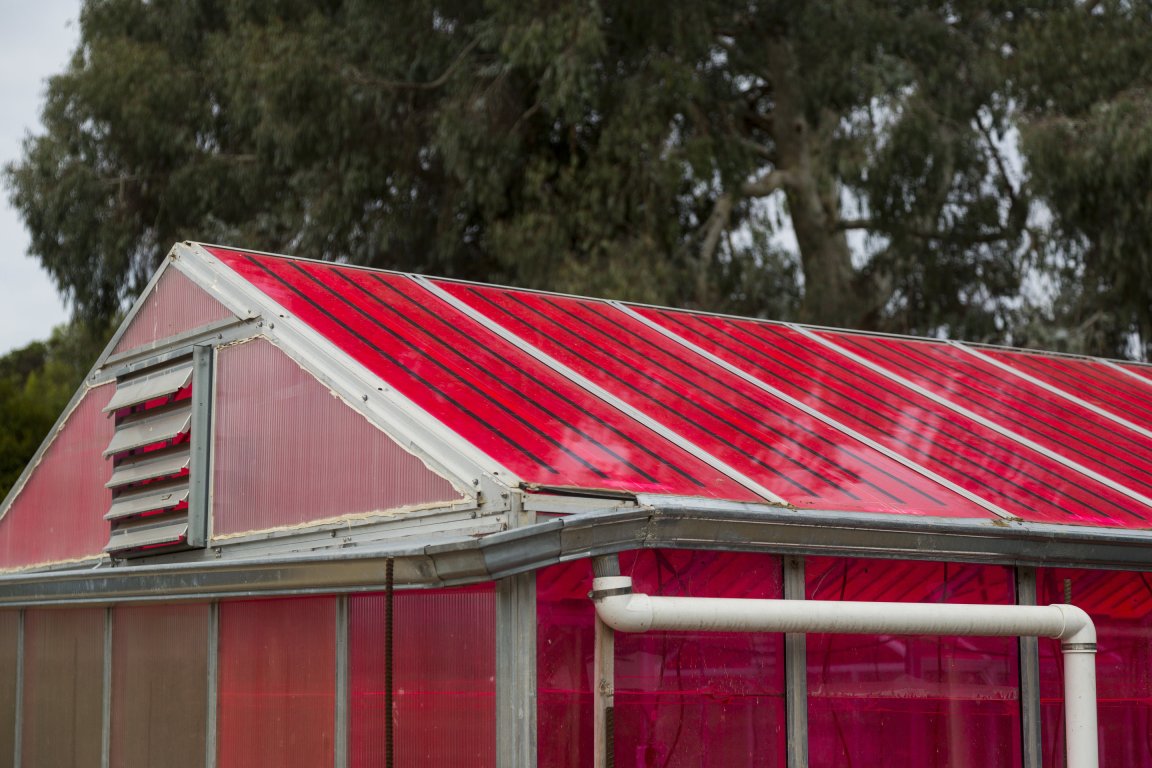
Solar Farming
Greenhouse farming has existed since the 15th century, and the idea of growing plants in an area that could be environmentally controlled can be traced back to the Roman Empire. However, since modern greenhouses were introduced in the 17th century, not much has changed. Now, greenhouses are powered by electricity from the grid and their total food production ability has grown to more than 9 million acres, according to University of California, Santa Cruz environmental studies professor Michael Loik.
“It’s big and getting bigger,” Loik said in a press release, which announced a new solar greenhouse model developed by UCSC researchers Sue Carter and Glenn Alers. The new solar greenhouse technology could potentially reduce dependence on greenhouses from the grid which could potentially cut down on energy consumption and limit greenhouse gas emissions.
“We have demonstrated that ‘smart greenhouses’ can capture solar energy for electricity without reducing plant growth, which is pretty exciting,” Loik, the first author on a paper published in Earth’s Future, a journal of the American Geophysical Union, said in a UCSC press release.
These “smart greenhouses” use what’s called Wavelength-Selective Photovoltaic Systems (WSPVs) to grow plants and generate self-sustaining electricity for the greenhouses. These are outfitted with transparent, pink roof panels that are stained with a luminescent dye which absorbs light and captures energy in narrow photovoltaic (PV) strips. Loik asserted that WSPVs are less costly than traditional photovoltaic systems while generating electricity more efficiently.

A Renewable Energy Ecosystem
Greenhouses use electricity to power their various monitoring systems, fans, lights, and temperature control. The growing popularity of greenhouse farming has meant that more electricity has been used, which the UCSC team wants to reduce by allowing greenhouses to produce electricity using the same solar energy that the plants need. “If greenhouses generate electricity on site, that reduces the need for an outside source, which helps lower greenhouse gas emissions even more,” Loik said. “We’re moving toward self-sustaining greenhouses.”
The UCSC team has been grown their first crops of tomatoes and cucumbers, which are some of the top greenhouse-produced crops globally, using these pink, novel greenhouses. “Eighty percent of the plants weren’t affected, while 20 percent actually grew better under the magenta windows,” Loik explained.
It’s not difficult to imagine how this technology might fit into the self-sustaining systems that renewables like solar are creating. With the increased usage of PV systems in homes, not just solar farms, and advancing energy storage batteries, the “smart houses” of the future are separating from the grid.
Apart from domestic use, solar roofs and windows are also making it possible to change the agricultural landscape. Concepts that combine eco-friendly houses with futuristic farming, like this vertical village which will be built in New Delhi, could easily become common in the cities of the future.